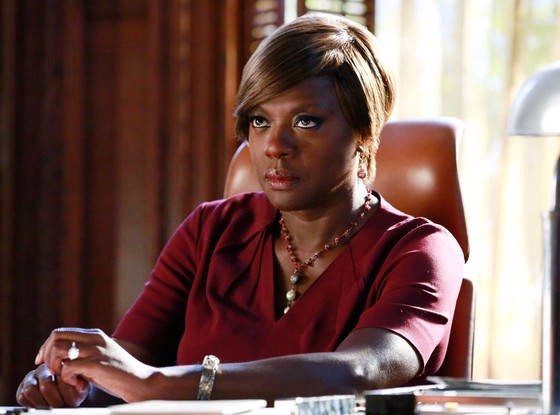“Television is looking up; it’s moving in the right direction,” Darnell Hunt, director of the Ralph J. Bunche Center for African American Studies at UCLA told the Los Angeles Times. “Film, however, that hasn’t really progressed.” That’s the general takeaway from the Bunche Center’s latest study, 2017 Hollywood Diversity Report: Setting the Record Straight. The report, of which Hunt is the lead author, is the fourth in a series “examin[ing] relationships between diversity and the bottom line in the Hollywood entertainment industry.”
This year’s edition of the Diversity Report offers even more evidence that “America’s increasingly diverse audiences prefer diverse film and television content.” To put it plainly, inclusivity sells. The study determined that “films with relatively diverse casts enjoyed the highest median global box office receipts and the highest median return on investment.” Studios continue to cater to white male audiences despite the fact that the majority of moviegoers are women and “minorities accounted for the majority of ticket sales for five of the top 10 highest-grossing films in 2015.”
The research also considers the roles women and minorities play onscreen and behind-the-scenes via the top 200 theatrical film releases in 2015 and 1,206 broadcast, cable, and digital platform television shows from the 2014–15 season. It also explores any correlations between the findings, box office earnings, and audience ratings. As Hunt’s comment suggests, TV is a more inclusive place than the movie theater.
The Diversity Report finds that minorities made gains in several TV fields: broadcast scripted leads, broadcast reality and other leads, digital scripted leads, and broadcast scripted show creators. The number of minorities serving as cable scripted show creators and cable reality and other leads remained the same. And the ranks of women increased in all fields — TV and film — besides cable reality leads and broadcast reality leads.
Even with these strides, the study’s authors don’t lose sight of the big picture. Women and people of color are still underrepresented “on every front in 2014–15.”
These problems don’t just come down to the amount of people of color and women on a set. As the Diversity Report concludes, there are several other aspects of the entertainment business that are biased against minorities and women. Industry gatekeepers, for example, pose a major obstacle. “Minorities remain woefully underrepresented on the rosters” of the three most dominant talent agencies, the report details.
Further, minority-directed films and films featuring minority leads were largely ignored at the 2015 Oscars ceremony — i.e. the first year of #OscarsSoWhite. And, while the 2015 Academy Awards saw some gains for women-led films, not a single woman-directed film won an Oscar.
The 2015 Emmys didn’t fare much better, according to the research. Broadcast scripted series from people of color “gained ground relative to those initiated by white show creators,” but women-created shows “continued to lose ground relative to those created by men.” Zero Emmys went to cable scripted shows from minorities, and women creators of cable shows continued to fall behind men.
Here are the main findings of the “2017 Hollywood Diversity Report.” Visit the Bunche Center website to read the entire study.
Minorities
- Since the previous report, people of color have posted gains relative to their white counterparts in these arenas: film leads, broadcast scripted leads, broadcast reality and other leads, digital scripted leads, and broadcast scripted show creators
- Minorities lost ground in four arenas: film directors, film writers, cable scripted leads, and digital scripted show creators
- People of color merely held their ground as cable scripted show creators and cable reality and other leads
- Minorities remained underrepresented on every front in 2014–15
Women
- Relative to their male counterparts, women posted gains in almost all Hollywood employment arenas
- However, they fell further behind as broadcast reality and other leads and cable reality and other leads
- Still, like minorities, women remained underrepresented on every front in 2014–15
Accolades
- In 2015, minority-directed films and those with minority leads lost ground at the Oscars relative to those led by white directors or that featured white leads
- While films featuring women leads gained some ground at the Oscars in 2015, those directed by women failed to win a single Oscar
- At the Emmys, broadcast scripted shows created by minorities gained ground relative to those initiated by white show creators
- Shows created by women continued to lose ground relative to those created by men
- None of the cable scripted shows created by minorities won an Emmy in 2015 (matching the previous three years)
- Cable shows created by women continued to lose ground relative to those created by men
Gatekeeping
- Since the last report, the three dominant talent agencies have maintained or increased their combined, dominant shares of the film directors, film writers, film leads, broadcast scripted show creators, broadcast scripted leads, and cable scripted leads credited for the theatrical films and television shows examined in 2014–15
- Minorities remain woefully underrepresented on the rosters of these powerful gatekeepers
Diversity Initiatives
- The most prominent industry diversity initiatives are writers’ programs (film and television) and grant programs (film)
- These programs are highly competitive, offering opportunities for networking and financing to a relatively small number of the thousands of potential, diverse candidates
- Initiatives focused on developing diverse creative executives — an area in dire need of improvement — are even less readily available
The Bottom Line
- Consistent with the earlier findings, new evidence from 2014–15 suggests that America’s increasingly diverse audiences prefer diverse film and television content
- Relatively diverse films excelled at the box office between 2011 and 2015
- Median black household ratings peaked for cable scripted shows with casts that were majority minority in 2014–15
- For Asian American and Latino households, median ratings peaked in the cable scripted arena for shows with casts that were from 31 to 40 percent minority







